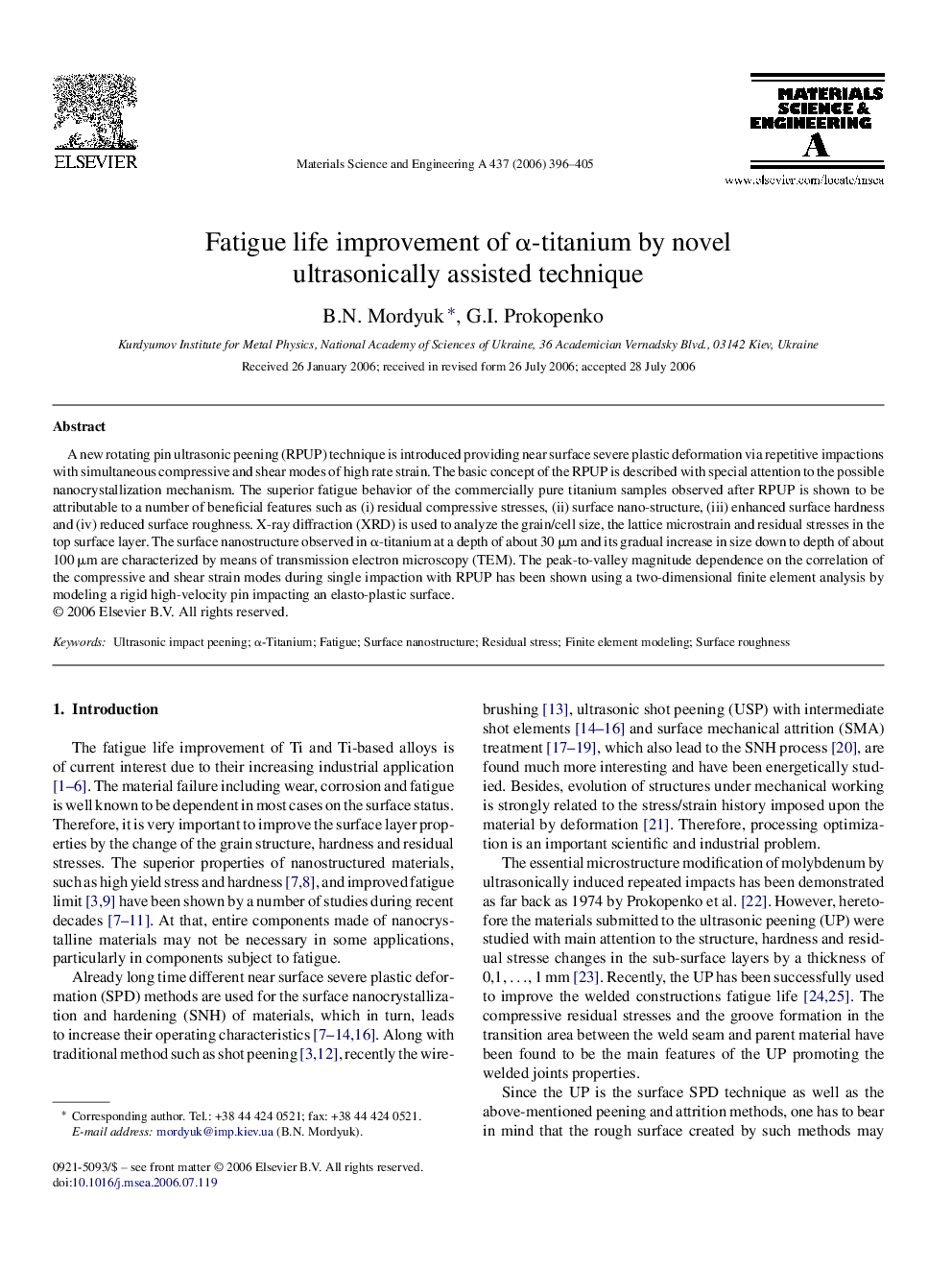| Article ID | Journal | Published Year | Pages | File Type |
|---|---|---|---|---|
| 1584869 | Materials Science and Engineering: A | 2006 | 10 Pages |
A new rotating pin ultrasonic peening (RPUP) technique is introduced providing near surface severe plastic deformation via repetitive impactions with simultaneous compressive and shear modes of high rate strain. The basic concept of the RPUP is described with special attention to the possible nanocrystallization mechanism. The superior fatigue behavior of the commercially pure titanium samples observed after RPUP is shown to be attributable to a number of beneficial features such as (i) residual compressive stresses, (ii) surface nano-structure, (iii) enhanced surface hardness and (iv) reduced surface roughness. X-ray diffraction (XRD) is used to analyze the grain/cell size, the lattice microstrain and residual stresses in the top surface layer. The surface nanostructure observed in α-titanium at a depth of about 30 μm and its gradual increase in size down to depth of about 100 μm are characterized by means of transmission electron microscopy (TEM). The peak-to-valley magnitude dependence on the correlation of the compressive and shear strain modes during single impaction with RPUP has been shown using a two-dimensional finite element analysis by modeling a rigid high-velocity pin impacting an elasto-plastic surface.
